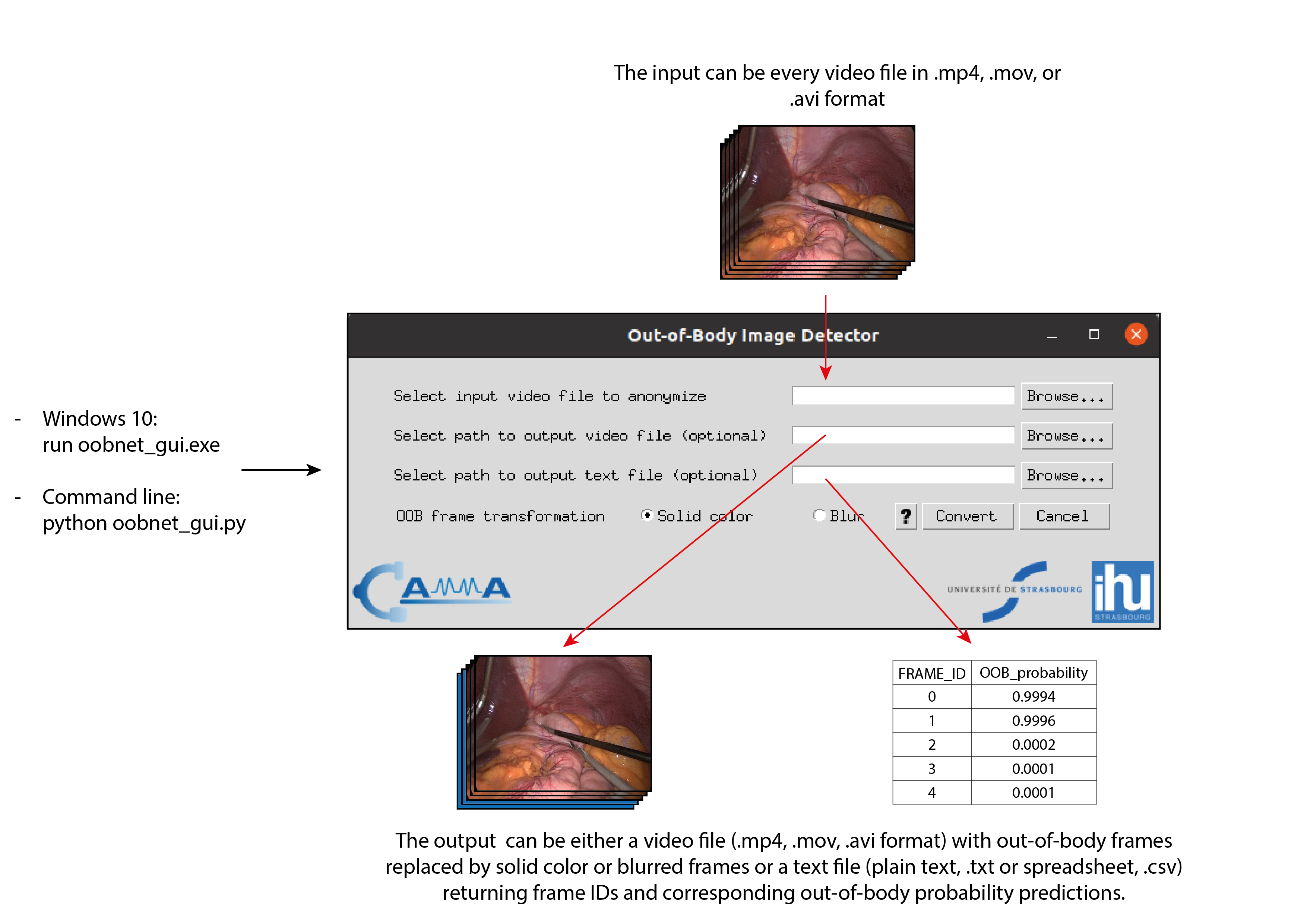Research Group CAMMA / University of Strasbourg / IHU Strasbourg
Out-of-body frames in endoscopic surgeries can contain privacy sensitive information. This tool is meant to help protect privacy by detecting and blurring out these out-of-body frames. Its performance is reported in the publication mentioned below. This tool is provided for demonstration and without warranty. The authors or their institutions can not be held liable for any privacy concern due to undetected out-of-body frames. This tool can be used through either the command-line interface or the GUI application. If you're using Windows 10, you can download and run the executable directly from here.
Execute the OOBNet by passing the input and output video paths in the command-line
python oobnet_exec.py --video_in <input/video/path> --video_out <output/video/path>
Optionally, you can also save the results to a text file. The file will contain frame ids and raw prediction results.
python oobnet_exec.py --video_in <input/video/path> --video_out <output/video/path> --text_out <output/text/path>
Alternatively, you can launch the GUI application by running the following command:
python oobnet_gui.py
-
Install Anaconda on your computer if you don't already have it. You can download it from here.
-
Clone this repository then
cdto its directory on your computer. Download the model checkpoint
wget -P ckpt https://s3.unistra.fr/camma_public/github/oobnet_detection/ckpt/oobnet_weights.h5
-
Create a new conda environment
conda create --name oob_detection python==3.8.5 -
Activate the environment
conda activate oob_detection -
Install dependencies
pip3 install -r requirements.txt
Note: If you have a GPU, you can replace tensorflow with tensorflow-gpu in the requirements.txt file before the 5th step.
When referring to this software, please cite the following publication:
@article{lavanchy_preserving_2023,
title = {Preserving privacy in surgical video analysis using a deep learning classifier to identify out-of-body scenes in endoscopic videos},
volume = {13},
issn = {2045-2322},
url = {https://doi.org/10.1038/s41598-023-36453-1},
doi = {10.1038/s41598-023-36453-1},
number = {1},
journal = {Scientific Reports},
author = {Lavanchy, Joël L. and Vardazaryan, Armine and Mascagni, Pietro and AI4SafeChole Consortium and Mutter, Didier and Padoy, Nicolas},
month = jun,
year = {2023},
pages = {9235},
}This code is available for non-commercial scientific research purposes as defined in the CC BY-NC-SA 4.0. By downloading and using this code you agree to the terms in the LICENSE. Third-party codes are subject to their respective licenses.
This license allows reusers to distribute, remix, adapt, and build upon the material in any medium or format for noncommercial purposes only, and only so long as attribution is given to the creator. If you remix, adapt or build upon the material, you must license the modified material under identical terms.
